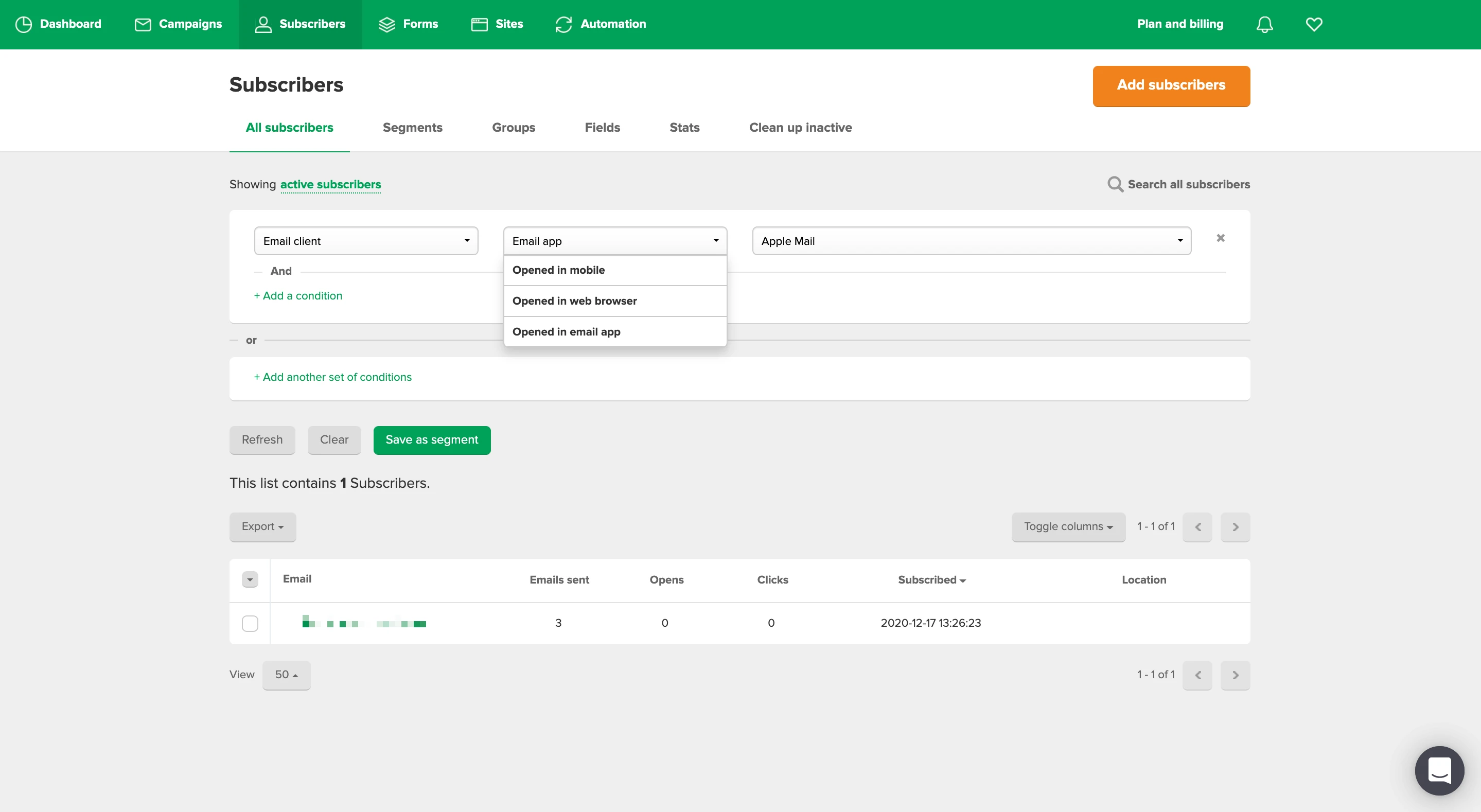All email tracking is enabled by default in MailerLite. If you wish to disable any tracking for a particular campaign or automation email, you can do so before sending.
How to enable and disable tracking in campaigns
There are 3 kinds of tracking you can enable/disable in your email campaigns:
Opens tracking - Tracks opens using an invisible beacon embedded in your campaign.
E-commerce link tracking - Appears when you have a Shopify, Woocommerce, BigCommerce, or PrestaShop integration and tracks purchases made by subscribers who followed an e-commerce link in your campaign.
Google Analytics - Tracks your campaign metrics in Google Analytics.
To enable/disable tracking on your campaign:
Navigate to the Campaigns page.
Click Create campaign.
Under Tracking options select or deselect the tracking options you wish to enable/disable.
How to enable and disable tracking in automations
To enable/disable tracking options on an automation email:
Navigate to the automation you wish to apply these settings to and click Edit.
Pause your workflow by toggling it to OFF. (Active workflows can't be edited).
Click to select the email step you wish to edit.
In the sidebar, select or deselect the tracking options you wish to enable/disable.
Note: If you disable opens tracking, e-commerce link tracking and Google Analytics will not be affected. Regular clicks will still be tracked and reported.
When you disable opens tracking, you’ll no longer be able to use certain features that rely on opens to function.
These include:
A/B split campaigns based on opens (A/B split test campaigns can still be run based on clicks)
Auto resend campaigns based on opens (Auto resend campaigns can still be sent based on clicks)
Opens by location
Automation condition: Was/was not opened
Countdown timers
Benefits of disabling opens tracking
By focusing your attention on clicks rather than opens, you have a clearer understanding of which subscribers take action to engage with your content.
Additionally, in the age of privacy, some subscribers find comfort in their favorite companies and brands opting not to track their location and behavior.
The biggest incentive to disable opens tracking is if you have a lot of Apple Mail users on your subscriber list. Apple Mail has a privacy feature called Apple Mail Privacy Protection that inhibits senders (email marketers) from seeing whether or not recipients opened their emails.
How does Apple Mail Privacy Protection work?
This new privacy feature works by pre-loading content—including tracking pixels—before someone even opens the email. To you, the sender, this will appear as if the email was opened, even if the subscriber never does.
If you’ve noticed your open rates have skyrocketed since September 20th 2021, this may be a result of skewed opens tracking.
While Apple Mail Privacy Protection may affect your campaign reports, it will not affect your deliverability. If you have a lot of Apple users on your subscriber list, we recommend disabling opens tracking or temporarily excluding them from campaign types that rely on opens to function such as A/B tests and auto resend campaigns.
Check out our blog post, 9 essential email marketing metrics and how to improve them for tips on improving your metrics!
